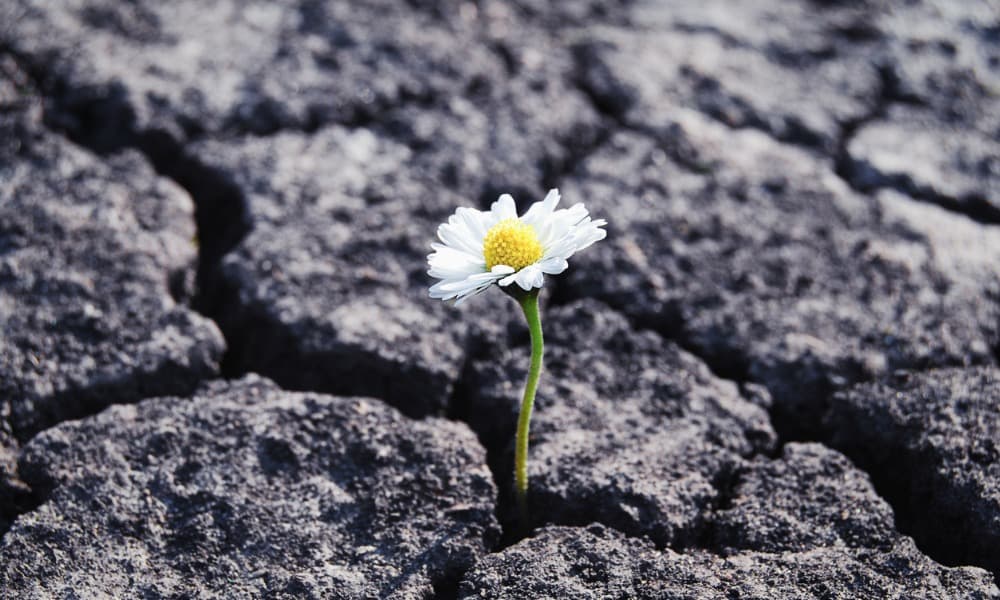7 Characteristics for More Resilient Leadership

Learning how to be a resilient leader helps us adapt to disruptions that are a part of everyday life.
Key Takeaways:
- Three levels of change:
- Small changes, which can be addressed within minutes or hours
- Medium changes, which take weeks or a few months
- Large changes, which are paradigm-shifting life disruptions
- Resilience allows us to adapt disruptions to our expectations faster and more effectively and bounce back
- Seven characteristics for more resilient leadership:
- Positivity
- Confidence
- Priorities
- Creativity
- Connection
- Structure
- Experimenting
As humans, we experience change as a disruption in our expectations – we tend to like control and predictability. But because we can’t predict what happens to us, our expectations are constantly disrupted.
To deal with change, we have to expend energy to adapt and bring our expectations back in line with what’s happening. This is where resilience comes in.
Learning how to build resilience is crucial for effective leadership, especially in complex times. Let’s dig into what change means and seven characteristics for facing disruption with greater resilience as a leader.
The levels of change
Change comes in all shapes and sizes and never stops disrupting our lives. There are three levels of change based on severity and how long it takes for us to deal with them:
- Level 1: Small changes. These minor disruptions may take minutes or hours to deal with, such as a detour when driving to work or getting a flat tire.
- Level 2: Medium changes. These changes require weeks or months to get back to normal. It could be getting a major new project at work or moving to a new living space in the same town.
- Level 3: Large changes. Significant changes are paradigm-shifting, such as marriage, divorce, a major medical illness, the death of a loved one, moving out of the country, or starting a new career. It may take months, years, or a lifetime to acclimate to large changes. They alter how we live and invite us to grow. We often choose to take on these changes – having a child, for example – because we hope we’ll experience positive results from the change.
We expend four types of personal energy to adapt to these levels of change: mental, emotional, physical, and spiritual.
Mental energy is when we’re learning the details of a new situation, like a new job. Emotional energy is the nervousness or excitement we feel about dealing with a change. Our physical energy is spent, for example, when we have to deal with that flat tire or waking up to tend to a fussy baby. Spiritual energy is when we meditate, pray, or otherwise center ourselves to get our thoughts together about the change.
While we can spend energy in four ways, it’s important to point out that we only have one bucket of energy to spend on adapting to change. We can’t separate our energy into personal and professional buckets. When we have multiple ongoing disruptions, we still pull all our energy from the same place.
People carry around a “portfolio of changes” at any given time. This portfolio includes everything they have going on at work and at home. Disruptions that are more immediate to us will get more energy and attention, and those are often the more personal, private changes.
Most leaders don’t know everything that’s going on in their employees’ personal lives. They may become judgmental if someone’s not performing well. It helps tremendously to be curious and empathetic about where they might be from a resilience perspective.
What is resilience, and why is it important?
Our human energy to adapt to disruption is finite, but because of our visceral need to make order from chaos and wrap our lives up neatly, we still try to work and work and work, even when our battery is shutting down. This can lead to change overload and burnout, creating unproductive and dysfunctional behavior.
Resilience is our ability to adapt to change, challenges, or disruptions while maintaining productivity and well-being. There’s no way to avoid disruptions, but being more resilient means we can adjust and regroup faster while absorbing that disruption.
Resilience helps us maintain and conserve our energy wisely as we confront the disruptions we experience. We need to sustain that finite amount of energy and learn to replenish it. Resilience can be cultivated and nurtured so we respond to change more effectively.
The seven characteristics of resilience
A characteristic-based model helps us measure resilience at a specific point in time. These seven characteristics are relevant for leaders so they can uncover how they approach, adapt to, and work through change:
1. Positivity
Positivity looks at our ability to moderate the level of threat we see when we evaluate our environment. How do we approach and deal with negativity or threatening situations? Do we see an opportunity or a threat? Positivity helps cultivate resilience.
2. Confidence
This characteristic asks how we feel about our ability to handle what we define as a threat. Do we feel confident and capable of dealing with it?
3. Priorities
The priorities characteristic asks if we know what is most important and where we should be spending our energy. It’s easy to waste energy on things that aren’t relevant.
4. Creativity
It wouldn’t be a change if we had seen it before, so we may not have the tools to deal with the new situation. Creativity helps us develop solutions specifically to deal with such a disruption. Creativity allows us to pause, get out of our heads, and adjust our usual way of thinking.
5. Connection
Connection allows us to engage other people to hear their ideas and garner their support on an issue. It helps us go outward instead of inward, encouraging us to engage and accept the help others have to offer. Connection requires us to acknowledge the value of seeking the ideas and opinions of others.
6. Structure
Here is where we develop an approach to handle our change. What is the organizational strategy we can use to approach the disruption? There are three levels that are assessed here: creating a structure for ourselves, using that structure, and communicating it for other people to use it.
7. Experimenting
Now it’s time to act. Experimenting is how we test our structure and approach. We don’t know if it will work, but we need to take action and learn from our results.
Work with The Sparks Group to build resilience
These seven characteristics outline how we can optimally confront change and learn how to be a resilient leader.
At The Sparks Group, we provide an assessment that assesses these seven components of resilience in the face of change. Each participant gets a score on these seven characteristics, and we help customize our coaching approach based on the results.
Contact The Sparks Group to learn more about our assessments for leaders.
